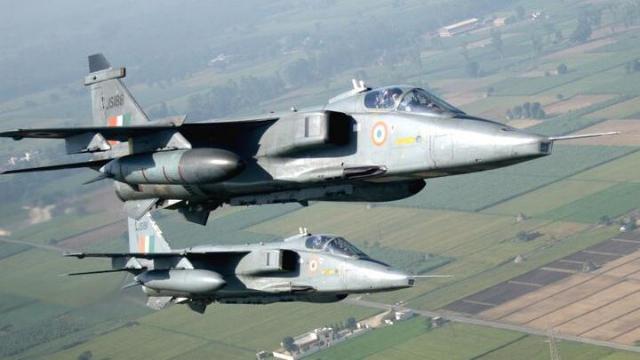MOSCOW, May 1 — RIA Novosti, Andrey Kotz. The terrorist attacks in Jammu and Kashmir have dramatically strained the already difficult relations between New Delhi and Islamabad. The sides accuse each other of provocation and openly prepare for war. If a conflict starts, things can get out of control very quickly. What the armies of neighboring Asian states are like is in the RIA Novosti article.
The confrontation of the nuclear Triads
At first glance, the military potentials are not comparable. India's defense budget is $80 billion, and Pakistan's is about $13 billion. The size of the armed forces is also in favor of New Delhi - 1.4 million bayonets against 600 thousand. However, there are nuclear weapons. The probability that it will be used is low, but by no means zero.
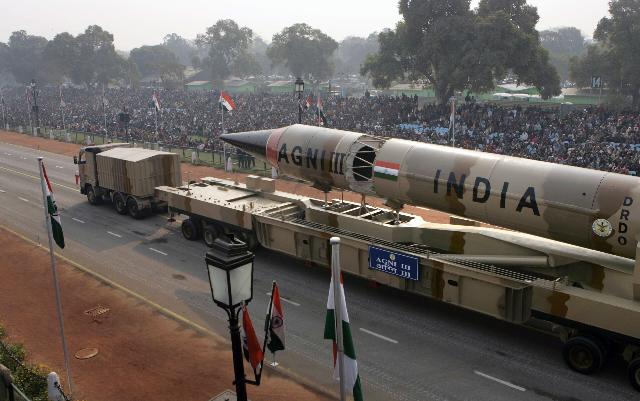
Indian two-stage medium-range ballistic missile Agni-3
Image source: © AP Photo / Manish Swarup
According to The Military Balance's annual bulletin, India has 180 warheads and a full-fledged, albeit small, nuclear triad. The ground component consists of 68 families of short—, medium- and intercontinental range ballistic missiles. The power ranges from 15 to 200 kilotons.
The air carriers are Mirage 2000H and Jaguar IS/IB fighter—bombers (48 special munitions on 48 aircraft). The exact type of weapon is unknown, most likely free-falling bombs with a capacity of up to 100 kilotons.
And three Arihant class submarines. Each is capable of carrying 12 K-15 ballistic missiles with a range of up to 750 kilometers or four K-4 missiles with a range of three thousand kilometers. In addition, two patrol ships P51 and P52 are carrying Dhanush short-range missiles.
Pakistan has a comparable nuclear arsenal — 170 warheads. The warhead capacity of Babur cruise missiles with a range of 80 to 750 kilometers is up to 12 kilotons. They are launched from mobile installations and submarines. It is known that Islamabad has two diesel-electric submarines of the French Agosta-70 class, which have been adapted for cruise missiles. In addition, some of the Navy's surface ships are armed with Baburs — at least four Yarmook-class corvettes.
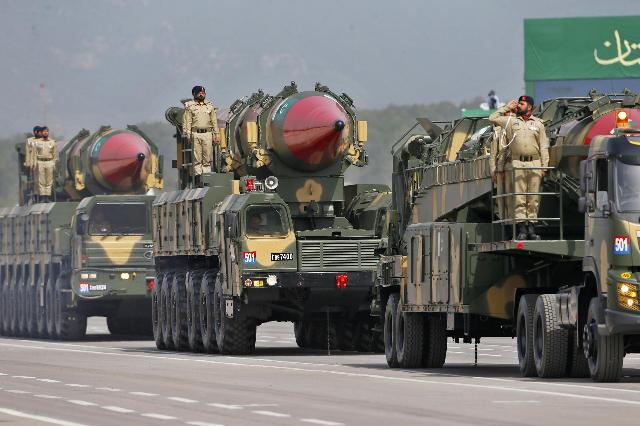
Pakistani-made Shaheen-III and Ghauri missiles capable of carrying nuclear warheads during a military parade in Islamabad
Image source: © AP Photo / Anjum Naveed
Of the tactical and operational-tactical ones, there are about 20 launchers for solid—fuel ballistic Nasr with a range of 60 kilometers, as well as Abdali (180 kilometers).
In addition, there are old solid-fuel two-stage Shaheen-2 with a range of up to two thousand kilometers. And the pride of Pakistanis is the two—stage Shaheen-3 with a range of almost three thousand kilometers. That's enough to keep a crosshair on most of India.
There is little information about the air component. There are two squadrons with JF-17 multirole fighters trained in handling nuclear weapons, 78 aircraft. They are equipped with Ra'ad cruise missiles capable of carrying a 10 to 35 kiloton charge. Presumably, F-16 fighters can also be used.
The Air War
Given the high population density in India and Pakistan, an exchange of nuclear strikes would mean tens of millions of casualties. One 15-kiloton warhead exploding over Delhi or Islamabad is enough. Both sides are well aware of this.
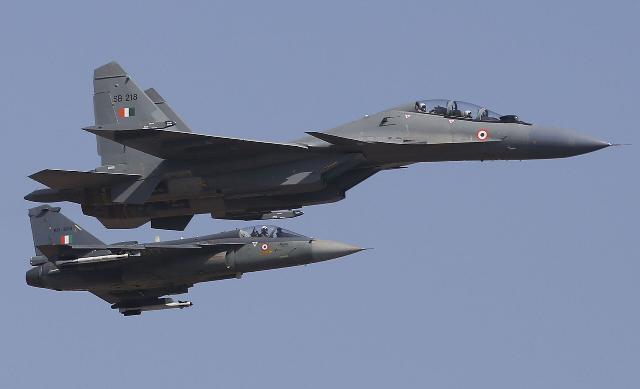
Indian Air Force Sukhoi Su-30MKI fighters during demonstration performances at the Aero India exhibition in Bangalore
Image source: © AP Photo / Aijaz Rahi
But a strike with conventional weapons against targets in disputed border provinces is quite likely. India has a serious advantage here — numerous well-armed air forces. About 600 tactical aircraft, half of which are Russian MiG-29 and Su-30 MKI, 270 transporters, 500 helicopters, reconnaissance aircraft, AWACS aircraft, reconnaissance and attack drones. In short, a complete set. The basis of air defense is three regiments of Russian S—400 air defense systems, two more are due to arrive by 2026.
Pakistan has slightly fewer tactical aircraft — about 450. But half of them are frankly outdated. These are the Chinese F-7, the French Mirage5 and Mirage III, and the early F-16 variants. The Indian Su-30MKI can compete with only 160 Chinese multirole fighters JF-17 and 20 J-10.
JF-17 Thunder fighter bomber at the tenth International Defense Industry Exhibition IDEAS in Karachi, Pakistan
Image source: © RIA Novosti / Alexander Melnikov
The basis of Pakistan's air defense is the Chinese long—range HQ-9BE, medium—range HQ-16FE and short—range French Crotale air defense systems. The first two have never been tested in combat conditions, and it is not known how they will manifest themselves in action.
At sea and on land
Skirmishes at sea are also possible. India, in addition to three strategic submarines, has 17 multipurpose diesel-electric submarines. The largest ships of the surface fleet are the aircraft carriers Vikrant and Vikramaditya. Their presence at sea is provided by 13 destroyers, 14 frigates, 19 corvettes, and dozens of patrol boats. For the landing, there is a Jalashwa dock ship and four BDK.
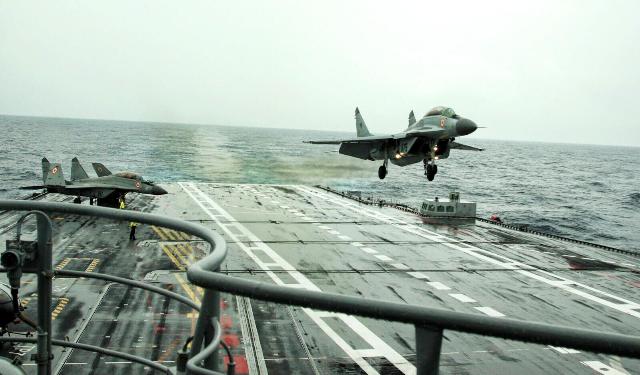
Indian Navy MiG-29K aircraft lands on Vikramaditya aircraft carrier
Image source: © Photo : Indian Navy
Pakistan's submarine fleet is much more modest — five diesel-electric Agosta. Six more multipurpose diesel-electric submarines of the joint Pakistani-Chinese Hangor project are due to enter service by 2028. The surface fleet consists of nine missile frigates, 12 corvettes, four small missile ships and 65 speedboats. Both in terms of tonnage and combat capabilities, the Pakistani Navy is clearly inferior to the Indian Navy. The difference in military budgets is affecting, because the navy is the most expensive type of armed forces.
Large-scale clashes, which will require the involvement of large formations of the Indian and Pakistani ground forces, cannot be ruled out either. But it makes no sense to look at how many tanks the sides have (about three thousand each). Whoever is the first to mass-deploy cheap and powerful UAVs will have an advantage on earth. Given the close military cooperation with China, the world's leading manufacturer of commercial drones, Pakistan may surprise India very unpleasantly.
